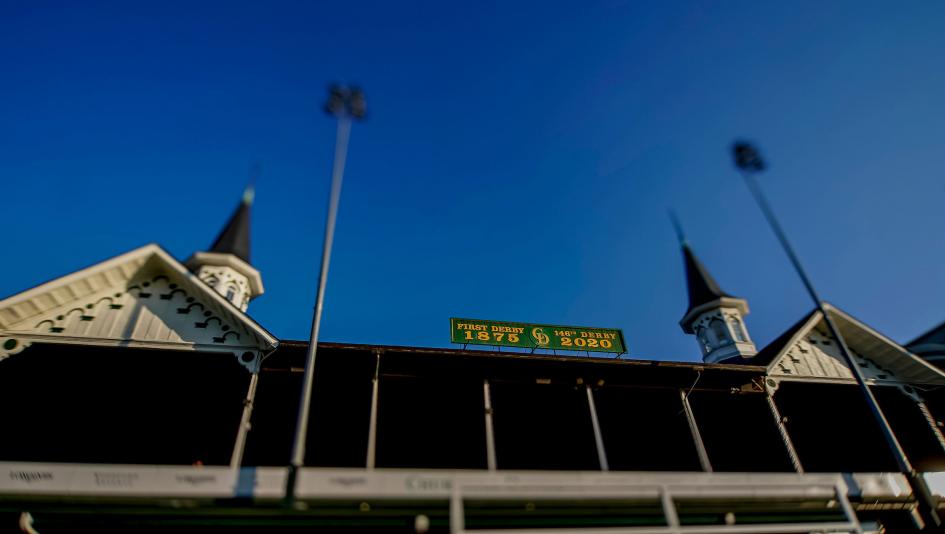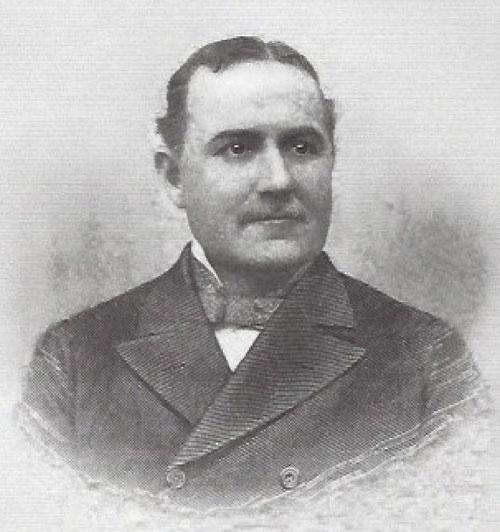
Remembering ‘The Coach’: The Late D. Wayne Lukas Touched Many Lives in Horse Racing and Beyond

As the Kentucky Derby entered its third decade, its future was in doubt. The Louisville Jockey Club was deep in debt, had turned a profit only once in two decades, and clearly needed new leadership if it was to survive.
Despite his best efforts, Meriwether Lewis Clark Jr., the man behind the racetrack and its signature race, could not stem the tide of change. Enter a group of prominent racing men who saw value in both local institutions and wanted to save it.
One of the men behind this new venture was William E. Applegate, a man whose deep connections to the area and the sport made him a natural fit for ensuring the survival of this classic race and its iconic home.
Business and Pleasure

The Applegate family had deep ties in the Bluegrass: William H. and wife, Catherine, started their family while living in Georgetown, Ky., and then moved south to Mississippi when he got a job working in the Confederate government. After the war, William H. started a whiskey distribution company with middle son William Edward, Applegate & Sons, while youngest son Cary started his own distillery near Yelvington in Daviess County. They eventually merged their businesses into one and expanded into distribution, rectifying facilities, and a distillery that produced Beechwood and Rosebud whiskies.
The problem with running a successful business is stress, especially when running a company that produced alcohol in the temperance movement era. Diagnosed with chronic dyspepsia, or indigestion, a doctor suggested that William E. Applegate should get outside more and recommended horse racing as a suitable diversion for that purpose. He dove into the sport headfirst, with some success as an owner before seeing an opportunity: perhaps there was more money with the betting side of the sport. Applegate soon was traveling coast to coast plying his trade as a bookmaker.
In order to operate at a racetrack, bookmakers had to pay license fees each year. Applegate decided that owning the tracks themselves was a more beneficial use of his money. To that end, he acquired interests in Oakley Race Track in Cincinnati and Latonia in northern Kentucky. In 1894, he took on a new role: investor in the New Louisville Jockey Club.
With the track in the red and the Kentucky Derby losing its place among the list of great stakes races, Applegate and his fellow investors bought out Clark and other shareholders, signaling a new era for the Derby and its home.
Investor in the Future
William E. Applegate’s partners in the New Louisville Jockey Club included William F. Schulte, owner of Argyle Stud; Emile Bourlier; and Henry Welhoff. The group leased the newly renamed racetrack, Churchill Downs, and set about making a few much-needed changes.

They spent $100,000 on improvements to the racetrack, tearing down the old grandstand and clubhouse and building a new grandstand on the west side of the racetrack, complete with Twin Spires designed by architect Joseph Baldez. After only four horses entered the 1895 Kentucky Derby, they shortened the race’s distance to 1 ¼ miles to attract more horses. The next year, nominations for the race rose from 57 to 171 and eight horses started in the 1896 edition.
Despite these changes, the fortunes of Churchill Downs did not improve much under the new regime. To stay afloat and cut costs, the New Louisville Jockey Club had reduced purses, but all that did was reduce the number and quality of horses willing to run, and that in turn lessened public interest in the races. It was clear that new leadership was needed if the racetrack and the Derby were to survive, but who would be the right candidates to take over?
Applegate approached Matt Winn, local tailor and noted horseplayer, and asked him to recruit new investors to buy into the racetrack and its signature race. Winn drafted a group including Louisville mayor Charles Grainger to buy into the track. Applegate retained his shares but was no longer on the board of directors. Winn came on as vice president and later became general manager of Churchill Downs.
Applegate’s decision to bring Winn into the fold changed the track’s and the race’s fortunes forever. While Winn built the Kentucky Derby into the institution it is today, William E. Applegate maintained his breeding and racing operations. He maintained his share in the family’s whiskey business while co-owning Oakwood Stud near Lexington, and he later partnered with son Hamilton C. ‘Ham’ Applegate in the racehorse business. Together with his son, the 1910s would bring the family two of their best horses.
Lasting Impact

Father and son went in with trainer Frank Weir to buy a group of yearlings from breeder John E. Madden for $3,000. The lot included a bay colt (soon to be a gelding) that the Applegates would name after one of their whiskies, Old Rosebud. The son of sprinter Uncle proved to be the best of them all, winning the 1914 Kentucky Derby in an injury-plagued stellar career that earned him a spot in the Hall of Fame. Applegate also would campaign Jack Hare, Jr., winner of one division of the split 1918 Preakness Stakes, the only time a Triple Crown classic would be split into multiple divisions.
William E. Applegate maintained his racing stable and shares in Churchill Downs until his death in 1928. Though his name might not be as well-known as Col. Matt Winn’s, the distiller, bookmaker, and breeder-owner was one of those early figures who saw what both Churchill Downs and the Kentucky Derby could be and endeavored to save both from fading into obscurity.